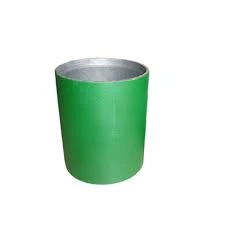- Afrikaans
- Albanian
- Amharic
- Arabic
- Armenian
- Azerbaijani
- Basque
- Belarusian
- Bengali
- Bosnian
- Bulgarian
- Catalan
- Cebuano
- Corsican
- Croatian
- Czech
- Danish
- Dutch
- English
- Esperanto
- Estonian
- Finnish
- French
- Frisian
- Galician
- Georgian
- German
- Greek
- Gujarati
- Haitian Creole
- hausa
- hawaiian
- Hebrew
- Hindi
- Miao
- Hungarian
- Icelandic
- igbo
- Indonesian
- irish
- Italian
- Japanese
- Javanese
- Kannada
- kazakh
- Khmer
- Rwandese
- Korean
- Kurdish
- Kyrgyz
- Lao
- Latin
- Latvian
- Lithuanian
- Luxembourgish
- Macedonian
- Malgashi
- Malay
- Malayalam
- Maltese
- Maori
- Marathi
- Mongolian
- Myanmar
- Nepali
- Norwegian
- Norwegian
- Occitan
- Pashto
- Persian
- Polish
- Portuguese
- Punjabi
- Romanian
- Russian
- Samoan
- Scottish Gaelic
- Serbian
- Sesotho
- Shona
- Sindhi
- Sinhala
- Slovak
- Slovenian
- Somali
- Spanish
- Sundanese
- Swahili
- Swedish
- Tagalog
- Tajik
- Tamil
- Tatar
- Telugu
- Thai
- Turkish
- Turkmen
- Ukrainian
- Urdu
- Uighur
- Uzbek
- Vietnamese
- Welsh
- Bantu
- Yiddish
- Yoruba
- Zulu
casing coupling
Understanding Casing and Couplings in Oil and Gas Operations
In the oil and gas industry, the extraction of hydrocarbons from underground reservoirs involves a series of complex processes, each critical to ensuring efficiency and safety. One of the foundational elements of these processes is the use of casing and couplings in drilling operations. This article delves into the significance of casing and coupling, their types, applications, and importance in maintaining operational integrity.
Understanding Casing and Couplings in Oil and Gas Operations
There are various types of casing, each designed for specific applications within the drilling process. The most common types include surface casing, intermediate casing, and production casing. Surface casing, the first layer installed, typically extends from the surface to a depth that ensures the wellbore's stability during drilling. This casing is crucial for protecting freshwater aquifers and isolating them from potential contaminants. Intermediate casing is installed later, allowing for further drilling into deeper, high-pressure zones and ensuring the well's structural integrity as it reaches deeper depths. Finally, production casing is used to enable the actual extraction of oil and gas. This casing is often perforated, allowing the hydrocarbons to flow into the well.
casing coupling

Couplings play a vital role in the assembly of casing sections. These are fittings that connect individual casing pipes together, ensuring a secure and leak-proof joint. Various types of couplings exist, including threaded, weld-on, and slip-on couplings, each designed for specific applications based on the requirements of the drilling environment. The choice of coupling can significantly influence the overall integrity of the casing system. High-quality couplings provide added strength and resistance to the harsh conditions encountered during drilling, including high pressures and temperatures.
The correct selection and installation of casing and couplings are fundamental to the success of drilling operations. Inadequate or incorrect casing can lead to wellbore instability, which can be dangerous and costly. For instance, blowouts, which are uncontrolled releases of oil or gas, can occur if the pressure zones are not adequately managed through proper casing techniques. This not only poses risks to the rig and personnel but can also cause significant environmental damage.
Moreover, advancements in technology have led to the development of more innovative casing and coupling designs. Modern materials, such as corrosion-resistant alloys and composite materials, provide enhanced durability and resistance to the extreme conditions of deep-well drilling. These innovations contribute to safer and more efficient drilling operations, allowing for the exploration of previously inaccessible reserves.
In conclusion, casing and couplings are indispensable components in oil and gas drilling operations. Their proper use ensures the structural integrity of wells, protects environmental resources, and facilitates the safe extraction of hydrocarbons. As the industry evolves and continues to embrace new technologies, the role of casing and coupling will remain critical in meeting the growing energy demands while minimizing ecological impacts. A thorough understanding of these components not only enhances operational efficacy but also underscores the importance of safety and environmental stewardship in the oil and gas sector.
-
Tubing Pup Joints: Essential Components for Oil and Gas OperationsNewsJul.10,2025
-
Pup Joints: Essential Components for Reliable Drilling OperationsNewsJul.10,2025
-
Pipe Couplings: Connecting Your World EfficientlyNewsJul.10,2025
-
Mastering Oilfield Operations with Quality Tubing and CasingNewsJul.10,2025
-
High-Quality Casing Couplings for Every NeedNewsJul.10,2025
-
Boost Your Drilling Efficiency with Premium Crossover Tools & Seating NipplesNewsJul.10,2025







